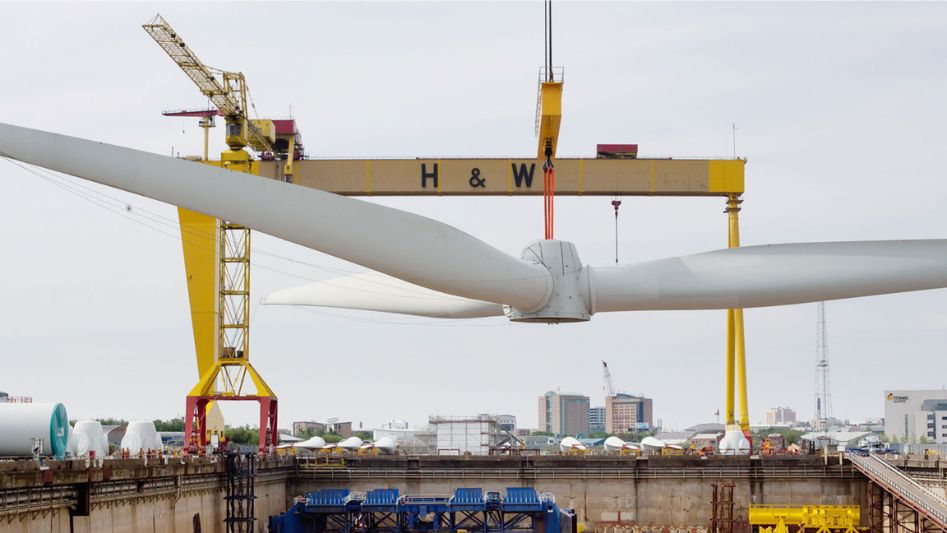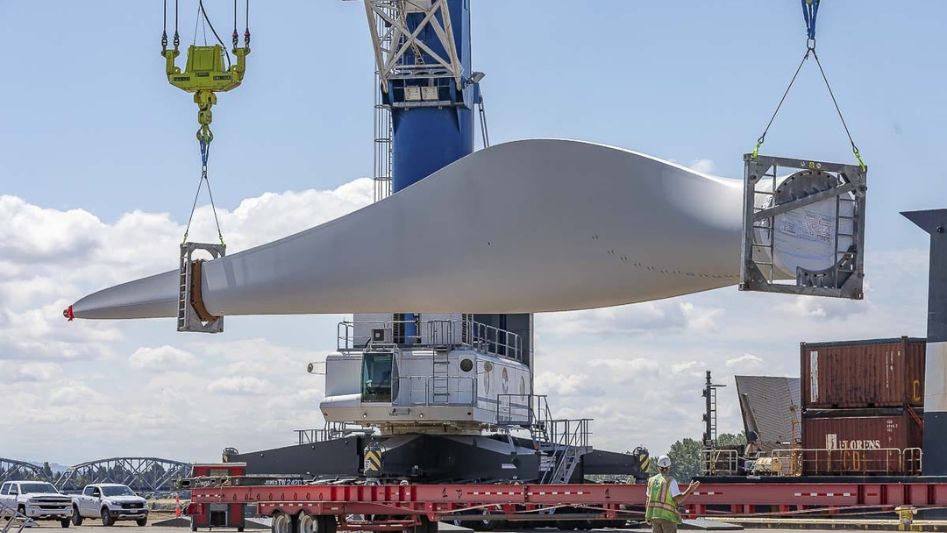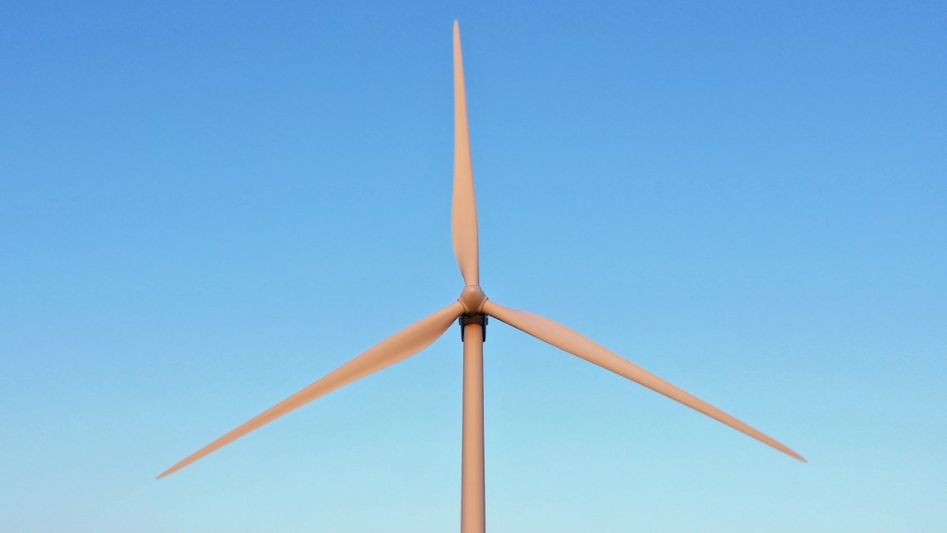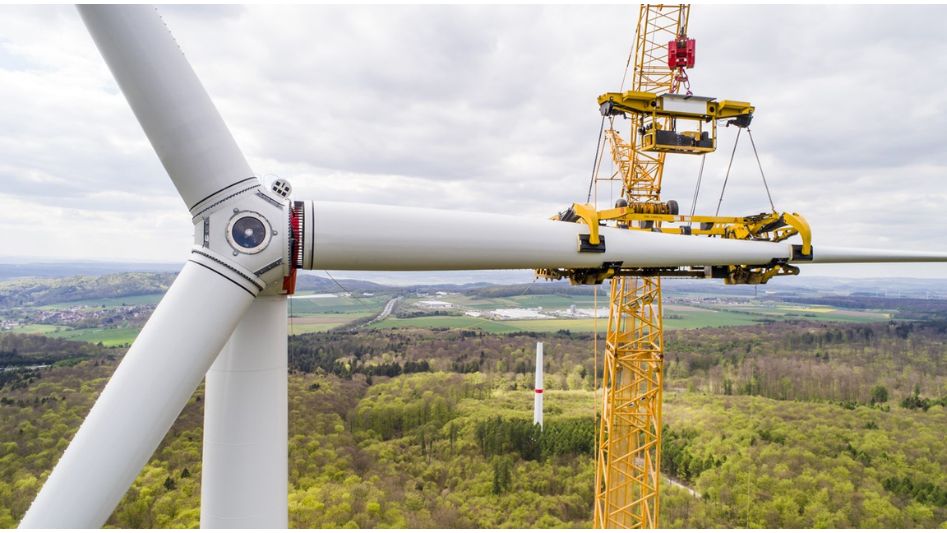Researchers have created a wind turbine blade that is both more affordable and seems to be recyclable. These are two characteristics that might drive the fast expansion of both onshore and offshore wind energy throughout the globe.

Because of this invention, the blades for higher turbines may now be as long as 262 feet, which is approximately the length of a football field. This may help minimize the escalating expenses associated with transportation.
According to the findings of experts working at the National Renewable Energy Laboratory, ensuring that recyclable blades can withstand the external elements for 30 years, which is the normal aim for the wind power sector, may require years of additional testing to be completed.
Daniel Laird, the head of NREL’s wind technology center, which has spent four years working on the new blade, said that reducing the cost of future blades would be a “huge stride” in driving the expansion of wind power. The center has been working on the new blade.
He said that over the course of the last three decades, research has contributed to a reduction in the price of producing power from wind turbines of around ninety percent. However, he emphasized that wind power still faces competition from coal, natural gas, and nuclear power to maintain its place as a developing energy industry sector.
In the next year or two, “I expect that a lot more work is going to be done on the recyclability of blades,” Laird said.

Not everyone has such a positive outlook. A report that was just published by the American Wind Energy Association (AWEA) suggests that “repurposing” gigantic old blades would be a simpler option for recycling than traditional recycling methods. According to the trade organization, “local communities” may utilize them for things like pedestrian bridges, playground equipment, and public benches. Materials for roofing are yet another possible use.
According to the AWEA study, Cindie Langston, manager of the solid waste division for Casper, Wyoming, was recently overjoyed to collect $600,000 for dumping old wind turbine blades in the local landfill. Langston was cited as saying this in the report.
She stated to AWEA that “this is the least problematic garbage we’ve ever received in terms of environmental issues.” “This is the least problematic rubbish we’ve ever gotten.” “We receive tires, asbestos, tainted dirt, and other rather terrible things,” the employee said.
The AWEA research also said that Vestas Wind Systems A/S, one of the leading wind turbine manufacturers in the world, has committed to removing traditional turbine blades entirely by the year 2040. This objective was included in the report.
Making a blade for a wind turbine is not a simple process. Conventional blades need a lot of work. They are constructed in the form of a sandwich using sheets of balsa wood, layers of fiberglass, and a chemical known as epoxy thermoset glue. A heat oven is needed to give the blades of a wind turbine the right form, strength, smoothness, and flexibility necessary to capture the wind and operate the turbine.
Most of these components are used in the new NREL blade, but they are bonded together using a thermoplastic resin that may become brittle and set the blade’s form even at ambient temperature. It is also possible to recover it at the end of its useful life by heating it into a liquid resin, which can then be recycled for use in the production of new blades.
This helps to reduce the waste issue, which became more difficult in Europe when the European Union prohibited the disposal of old blades in landfills. This helps to minimize the problem. Elium is the name of the newly developed resin, and Arkema Inc., a French firm with operations in King of Prussia, Pennsylvania, is the manufacturer. NREL and Arkema are collaborating on the development of the recyclable blade.
According to Robynne Murray, a research engineer at NREL’s laboratory who has been constructing the novel blades, they are subjected to stress testing in the laboratory versus traditional blades. The studies reveal, among other things, that the more recent blades have what is referred to as a stronger “damping effect.” This implies that they lower wind-caused vibrations, which are a source of discomfort for humans and may shorten the life of turbine structures.

You May Also Like
What Is A Vertical Axis Wind Turbine (VAWT)?
Vertical Axis Wind Turbines. Can They Work Together?
Vertical Axis Wind Turbine in Urban Applications

